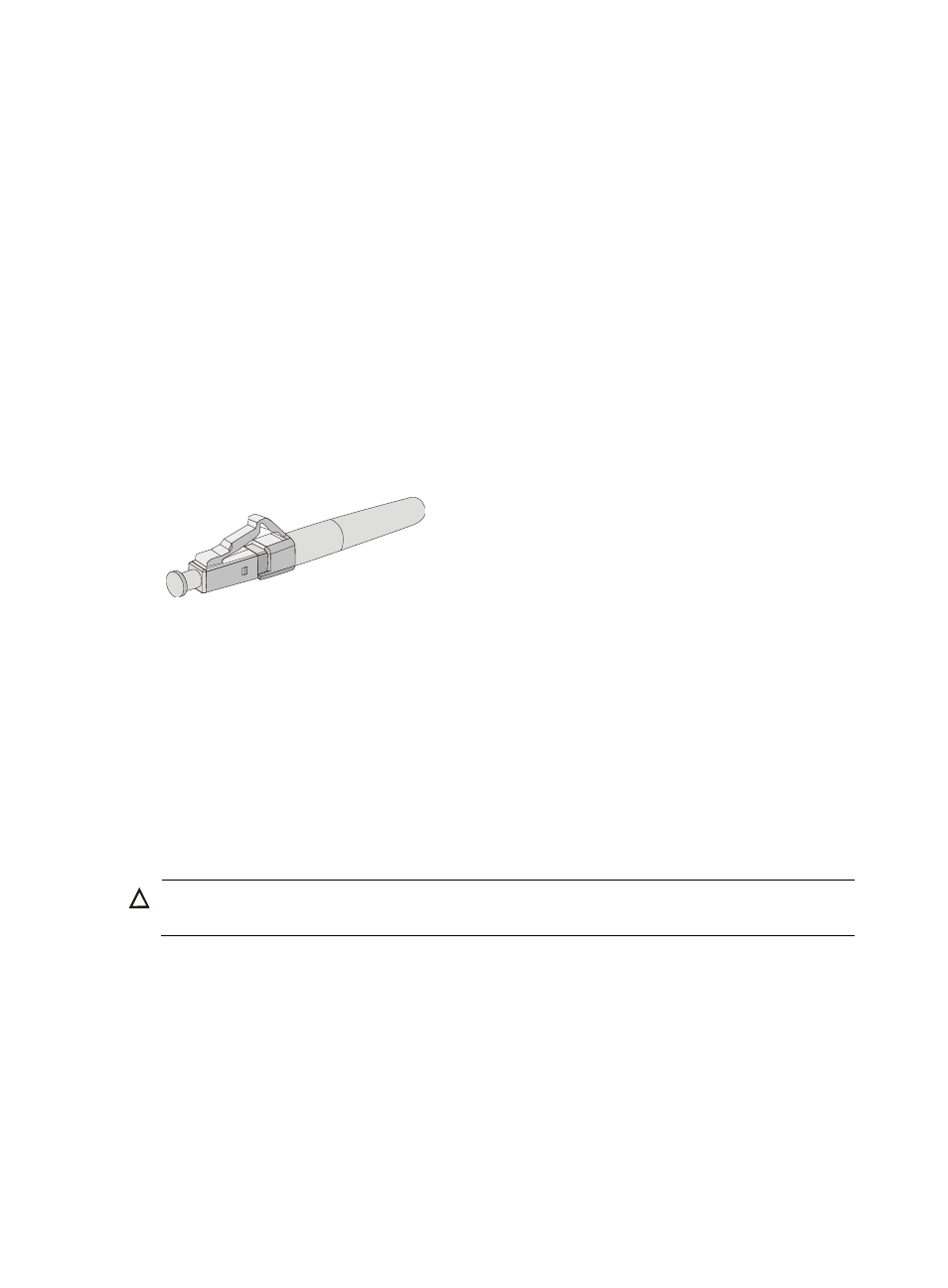Introduction to fiber connector, Precautions, Installing the xfp, sfp, sfp+, and qsfp+ modules – H3C Technologies H3C S12500 Series Switches User Manual
Page 60

50
1.
Plug one end of an Ethernet twisted pair cable into the copper Ethernet port (RJ-45 port) to be
connected on the switch.
2.
Plug the other end of the cable into the RJ-45 port of the peer device.
Connecting the switch to the network through a fiber Ethernet
port
Use an optical fiber to connect an XFP, SFP, CFP, SFP+, or QSFP+ port on the switch to the network. You
must install a transceiver module to the switch, and then insert the fiber connector to the module.
Introduction to fiber connector
Fiber connectors are indispensable passive components in an optical fiber communication system. They
allow the removable connection between optical channels, which makes the optical system debugging
and maintenance more convenient and the transit dispatching of the system more flexible. Among
various fiber connectors, only the LC connector is described here.
Figure 49 LC connector
Precautions
Follow these precautionary steps:
•
When selecting a fiber network facility, make sure the type of the connector and the fiber matches
the adopted fiber port.
•
Be sure to install the dust cover if the fiber port is not connected to a fiber connector.
•
Some invisible rays might be emitted from the fiber port if the fiber port is not connected to a fiber
connector or the dust cover is removed. Therefore, never stare at the fiber port directly.
•
Never bend or curve a fiber when connecting it.
Installing the XFP, SFP, SFP+, and QSFP+ modules
CAUTION:
Do not touch the golden finger of a transceiver module during installation.
The installation of the XFP, SFP, SFP+, and QSFP+ modules is similar. This section uses an SFP+ module
as an example.
To install an SFP+ module:
1.
Remove the optical fiber if the SPF+ module is installed with an optical fiber.
2.
Put on an ESD wrist strap, and make sure it has close skin contact, and is correctly grounded.
3.
Unpack the SFP+ module and make sure the clasp is closed.
4.
Gently insert the SFP+ module into the port until it fits in completely, as shown in
.
